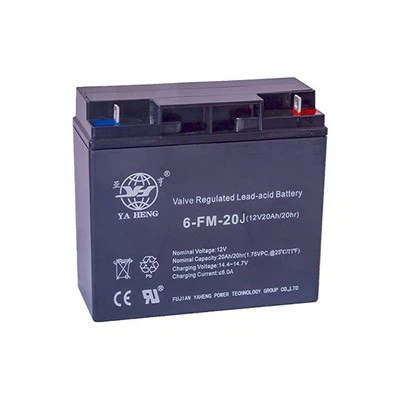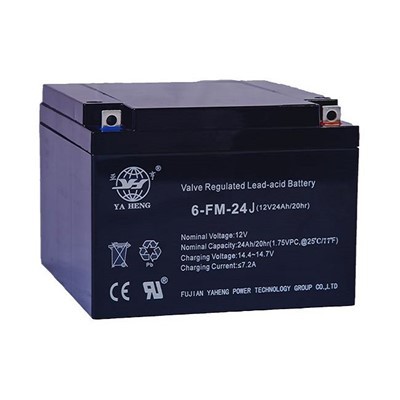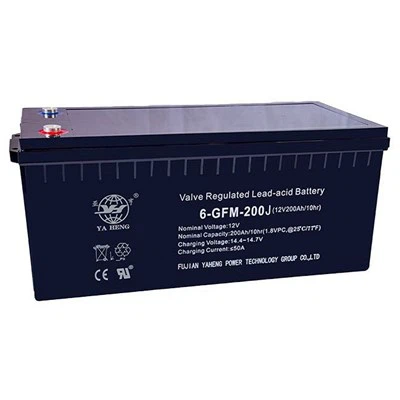GEL Battery
What Is GEL Battery
A GEL battery, also known as a gel cell, is a type of lead-acid battery that uses an electrolyte in the form of a gel. The gel is made by mixing sulfuric acid with fumed silica, which creates a thick paste-like substance that immobilizes the acid. This gel electrolyte is then used instead of the liquid electrolyte found in traditional lead-acid batteries. GEL batteries are commonly used in applications where maintenance is difficult or impossible. The gel electrolyte is less prone to evaporation than traditional liquid electrolytes, so GEL batteries require less maintenance and have a longer lifespan. They are also less likely to leak, spill, or emit gas, making them a safer alternative to other types of batteries.
Benefits of GEL Battery
No leaks
Even though wet cell batteries are sealed in a plastic encasement there is still the chance that it will leak. Gel batteries are also sealed but with a valve that removes excess pressure. This means that between the gel substance and the removal of pressure, there is nowhere for the mixture to go.
Minimal risk
When damage occurs to a traditional lead-acid battery you are faced with a massive and dangerous clean up (not to mention the impact on anything the battery acid may come into contact with during the process). Gel batteries will not leak out if the casing becomes damaged, so there is a reduced risk of harm coming to the equipment and clean up hazards.
Vibration resistant
One of the biggest complaints with wet cell batteries is that they are very susceptible to extreme vibration and other impacts. Gel batteries absorb the impact and vibrations, making them great batteries for items such as four wheelers.
No fumes
Because these batteries are comprised of a gel substance there are minimal fumes created as a result of use. This means that there is a reduced need for ventilation which increases the potential applications gel batteries can be used for, as well as making them easier to charge anywhere.
-
Portable Power Bank Battery12V20AH GEL Battery is designed with capacity 20AH@ C20, the size is L 181*W 77* H 167 mm. theAdd to Inquiry
-
RV Power Bank Battery12V24AH GEL Battery (6-FM-24J) is silicon GEL battery. The designed capacity is 24AH@ C20, the sizeAdd to Inquiry
-
Jump Starter Power Battery12V24AH starting Battery is silicon GEL battery. The designed capacity is 24AH@ C20Add to Inquiry
-
Camper Power Battery12V150AH GEL Battery (6-GFM-150J) is silicon GEL battery. The designed capacity is 150AH@ C10, theAdd to Inquiry
-
RV Power Station Battery12V200AH GEL Battery (6-FM-200J) is silicon GEL battery. The designed capacity is 200AH@ C10, theAdd to Inquiry
- Tel: +86-760-88625562
- Fax: +86-760-88625562
- Email: johny5@126.com
- Add: No.12 Ave.1 North, Industrial Rd. East, Guzhen, Zhongshan, Guangdong, China
Why Choose Us
Professional team
Our professional team collaborate and communicate effectively with one another, and are committed to delivering high-quality results. They are capable of handling complex challenges and projects that require their specialized expertise and experience.
One stop solution
We can offer a range of services, from consultation and advice to product design and delivery. It is a convenience for the customers, as they can get all the help they need in one place.
Innovation
We are dedicated to improving our systems continually, ensuring that the technology we offer is always cutting edge.
24h online service
We try and respond to all concerns within 24 hours and our teams are always at your disposal in case of any emergencies.
RV power bank battery
It works as a backup power source to the RV's main battery, allowing users to enjoy extended off-grid camping trips without worrying about running out of power. RV power bank batteries are typically made with lithium-ion technology, which is lightweight, long-lasting, and efficient. They are available in various sizes and capacities to match different RV power demands, from small portable units to larger systems that can power the entire RV. Some RV power bank batteries also come with built-in solar panels for recharging, making them even more versatile for outdoor adventures.
Jump starter power battery
A jump starter power battery is a portable and rechargeable battery pack that provides a high output of power to jump start a vehicle's dead battery. It can be used on cars, trucks, motorcycles, boats, and other vehicles with gas or diesel engines. The jump starter power battery typically comes equipped with heavy-duty jumper cables and can also be used as a portable power bank to charge electronic devices such as smartphones, tablets, and laptops.
Camper power battery
A camper power battery is a portable battery system designed to power and charge all the devices and appliances you need while camping. It is usually a deep cycle battery that can provide power for an extended period without recharging. A camper power battery can power lights, fans, refrigerators, radios, and other essentials. It is essential to choose a high-quality battery with enough capacity for your needs to ensure you don't run out of power during your camping trips.
Portable power bank battery
It typically contains a lithium-ion battery, which can be recharged multiple times and is known for its long lifespan. The power bank battery is designed to be portable and fits easily into a backpack, purse, or pocket, making it the ideal solution for people who need to charge their devices on the go. Some portable power banks can even charge multiple devices simultaneously, making them a versatile and practical accessory for travelers or anyone who needs to stay connected.

Capacity: This refers to the amount of energy the battery can store, usually measured in amp-hours (Ah). You'll need to choose a battery with a capacity that's suitable for your needs, based on factors like the size of your load and how long you need the battery to last.
Voltage: Gel batteries come in different voltages, such as 6V, 12V, and 24V. You'll need to choose a battery with the appropriate voltage for your system.
Application: Different types of gel batteries are designed for different applications, such as deep cycle use (for powering appliances like fridges) or backup power (for keeping critical systems running during a power outage). Make sure you choose a battery that's suitable for your specific needs.
Brand: It's important to choose a reputable brand of gel battery, as this can have a big impact on the battery's performance and longevity. Look for brands with a proven track record of reliability and quality.
Price: While it's important to stick to your budget, it's also important to remember that quality is key when it comes to gel batteries. Don't sacrifice quality for a lower price, as this could end up costing you more in the long run. Instead, choose the best quality battery that you can afford.
A gel battery is a type of rechargeable battery that utilizes a gelatin-like substance to immobilize the electrolyte inside the battery. This innovative design not only increases the battery's performance and life span but also makes the battery safer and maintenance-free.
Choose the right kind of gel battery for your purpose. There are various types of gel batteries designed for different applications, such as automotive, marine, solar power, and UPS (uninterruptible power supply) systems. Install the battery in the appropriate location, ensuring it is securely fastened and placed out of reach of children and pets. Connect the battery's positive and negative terminals to the corresponding terminals of the device you intend to power using appropriate cables or connectors. Make sure the connections are tight and secure.
Charge the battery before using it for the first time. Most gel batteries come partially charged, but it is recommended to fully charge the battery before use to achieve optimal performance and lifespan. Use a compatible charger and follow the manufacturer's instructions carefully. Monitor the battery's voltage and charge status regularly to ensure it remains within safe and optimal operating conditions. Overcharging or undercharging the battery can damage it or shorten its lifespan. Store the battery in a cool and dry place when not in use. Avoid exposing it to extreme temperatures, moisture, and direct sunlight. Dispose of the battery properly when it reaches the end of its lifespan. Gel batteries are recyclable, and most countries have specific regulations on how to dispose of them safely. Follow the local regulations and regulations carefully.

Application of GEL Battery
Solar power systems
Gel batteries are ideally suited for solar power systems as they can withstand deep discharges and have a long cycle life. They are also maintenance-free, which makes them ideal for remote locations where it is difficult to access the batteries for maintenance.
Telecommunications
Gel batteries are used extensively in the telecommunications industry as backup power for cell towers, base stations, and other critical equipment. They are highly reliable, require minimal maintenance, and can operate in extreme temperatures.
UPS systems
Gel batteries are ideal for use in uninterruptible power supply (UPS) systems as they provide reliable backup power during power outages or other disruptions to the electricity grid. They are also ideal for use in data centers and other critical facilities.
Marine and RV applications
Gel batteries are often used in boats, yachts, and RVs due to their ability to withstand vibration and shock. They are also maintenance-free, which makes them ideal for use in marine and RV applications where access to the battery is limited.
Electric vehicles
Gel batteries are increasingly being used in electric vehicles due to their superior performance and safety. They are also environmentally friendly, as they are recyclable and do not contain toxic chemicals or heavy metals.
Material of GEL Battery
Gel batteries typically consist of lead-acid chemistry and, as the name suggests, a gel-like substance in place of traditional liquid electrolyte. The gel substance is a mix of sulfuric acid and fumed silica which is thickened to the point of being immobile. The battery's electrodes are typically made of lead or lead dioxide, and a separator made of microporous material is used to keep the electrodes separated while still allowing ion flow. These materials are then housed in a durable plastic container, which is filled with the gel electrolyte. Gel batteries have proven to be a popular choice in applications where vibration, shock, and extreme temperature fluctuations are common. They are typically used in applications such as UPS systems, renewable energy storage, and recreational vehicles, due to their long-term reliability and low maintenance requirements.
The Component of the GEL Battery
Lead-acid battery
The main component of a gel battery is the lead-acid battery. It comprises of two lead plates - a positive plate (made of lead peroxide) and a negative plate (made of pure lead) that are immersed in an electrolyte solution of sulfuric acid and distilled water.

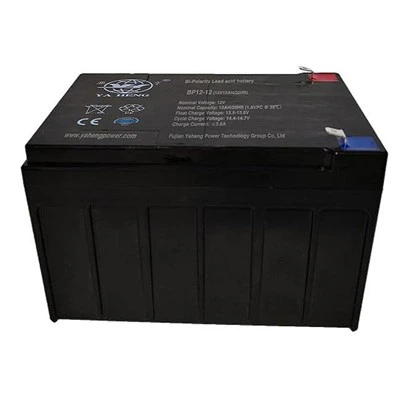
Sealed container
The lead-acid battery is housed in a sealed container made of durable plastic or hard rubber. This container is designed to prevent leakage and protect the battery from damage due to external factors.
Gel electrolyte
The gel electrolyte is a thick, gelled substance made of silica dust and sulfuric acid that is added to the lead-acid battery cells. It helps to increase the battery's safety, capacity, and reliability.
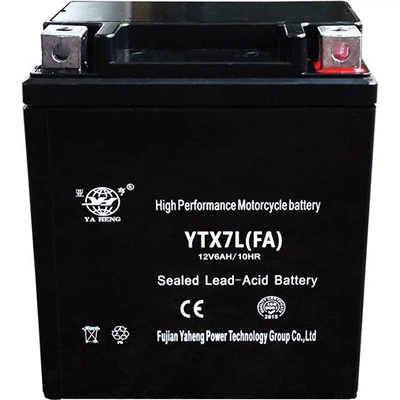
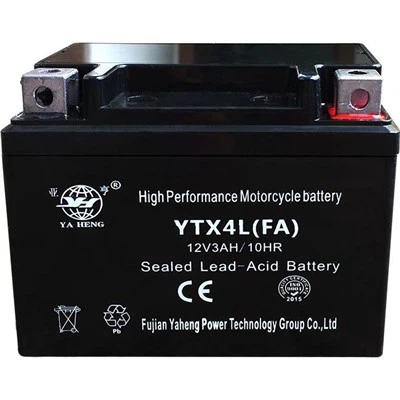
Terminal
A battery terminal is the point at which an electrical circuit is connected to the battery. The terminal is usually made of brass or lead and is located at the top of the gel battery.
Separator
The separator is a thin, porous material placed between the positive and negative plates of the lead-acid battery. It helps to improve the battery's efficiency by preventing short circuits and maintaining a consistent distance between the plates.

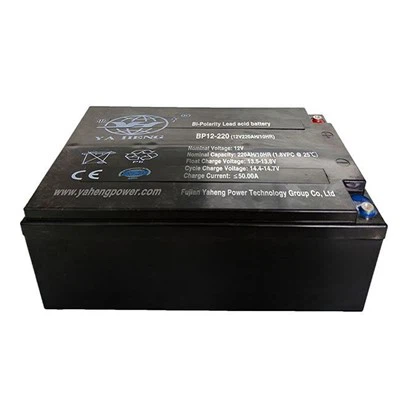
Vent valve
The vent valve is a safety feature found at the top of the gel battery that helps regulate the pressure and temperature inside the container. It also allows gases to escape if the pressure inside the battery reaches dangerous levels.

Choose the correct charger: Gel batteries require chargers specifically designed for use with gel batteries. Make sure the voltage and amperage output of the charger match the specifications of your gel battery.
Connect charger: Connect the charger to the battery by attaching the red positive clip to the positive terminal and the black negative clip to the negative terminal.
Check charger settings: Make sure the charger is set to the correct voltage and amperage for your gel battery.
Plug in charger: Plug the charger into an electrical outlet and turn it on. The charger should automatically begin charging the battery.
Monitor charging: It's important to monitor the charging process and make sure the battery doesn't overheat. If the battery gets too hot, stop charging and wait for it to cool down before continuing.
Disconnect charger: When the battery is fully charged, disconnect the charger from the battery and then unplug the charger from the electrical outlet.
Store battery: If you won't be using the battery right away, store it in a cool, dry place. Recharge the battery every few months to maintain its health.
Before installing your new gel battery, make sure that the battery and its terminals are compatible with your device and its charging system. Check the specifications of your device to ensure that it supports a gel battery. Turn off the power to your device and disconnect it from any external power source. Locate the battery compartment or holder on your device and remove the old battery. Make sure to properly dispose of the old battery in an environmentally-friendly manner. Clean the battery compartment with a dry cloth and check for any signs of corrosion or damage. If you find any corrosion or damage, clean it with a damp cloth and allow it to dry before installing your new battery. Insert your new gel battery into the battery compartment.
Make sure that the positive and negative terminals on the battery match the corresponding terminals in the battery compartment. Secure the battery in place using any clips or brackets that are provided with your device. Make sure that the battery is firmly in place and cannot move around. Connect the battery terminals to the corresponding terminal leads in your device. Make sure that the positive and negative leads are correctly connected to the corresponding terminals on the battery. Turn on the power to your device and test to see if it is functioning correctly. If your device is not functioning correctly, check your battery connections and make sure that they are secure. Your gel battery should now be installed and ready to use. Pay attention to the manufacturer's instructions for charging and maintaining your gel battery to ensure that it lasts for a long time.
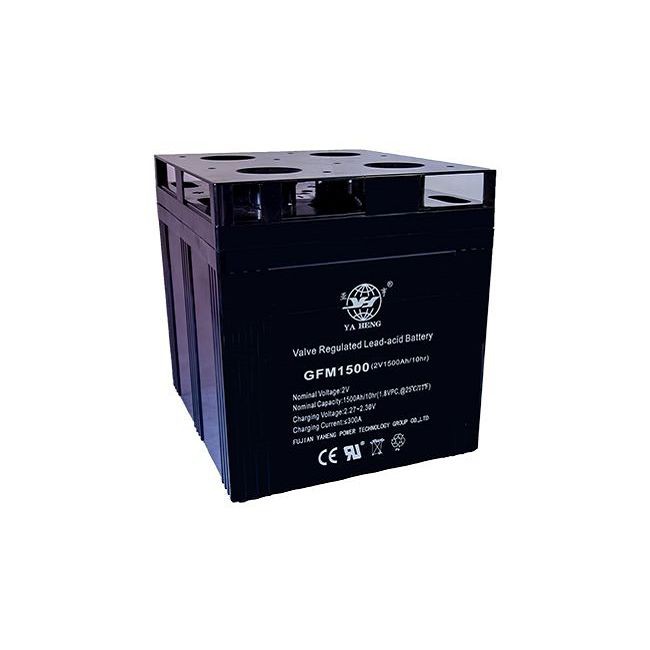
What Is the Difference Between a GEL Battery and a Regular Battery
A gel battery, also known as a sealed lead-acid battery, is a type of battery that uses a gel electrolyte instead of a liquid electrolyte. The gel electrolyte prevents the battery from leaking or spilling, which makes it very safe to use and handle. Gel batteries are often used in applications where safety is a top priority, such as in UPS systems, alarms, and emergency lighting.
On the other hand, a regular battery, also known as a flooded lead-acid battery, contains a liquid electrolyte that can leak or spill if the battery is tipped over or damaged. These batteries require regular maintenance, such as adding water to the electrolyte and checking the battery's charge level. Regular batteries are commonly used in automotive applications, such as for starting engines or powering electrical accessories.
How to Maintain GEL Battery
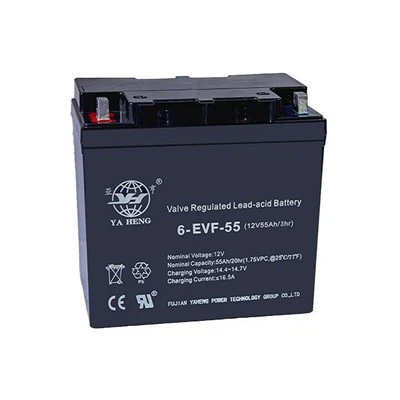

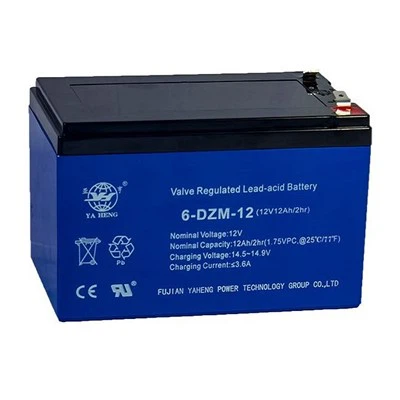
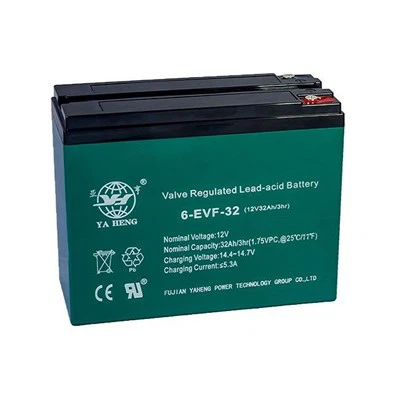
Charge the battery correctly
It is important to follow the manufacturer's instructions when charging your gel battery. Overcharging or undercharging the battery can damage it and reduce its lifespan.
Keep the battery clean
Dirt and debris can accumulate on the surface of the battery, which can lead to corrosion and reduce the battery's performance. Use a clean, damp cloth to wipe down the battery periodically.
Check the water level
Unlike traditional lead-acid batteries, gel batteries do not require regular maintenance of water levels. However, if you want to check the water level in your battery, make sure to use distilled water and only fill up to the recommended level.
Avoid over-discharging
Over-discharging your battery can damage it and reduce its lifespan. Try to avoid letting the battery run down completely before recharging it.
Store the battery properly
If you need to store your gel battery, make sure to keep it in a cool, dry place where it won't be exposed to extreme temperatures or humidity.
Certificate



FAQ
We're well-known as one of the leading gel battery manufacturers and suppliers in China. Please feel free to buy high quality gel battery for sale here from our factory. For customized service, contact us now.
solar battery for powering rescue equipment, solar battery for powering fishing equipment, solar battery for powering fitness trackers
